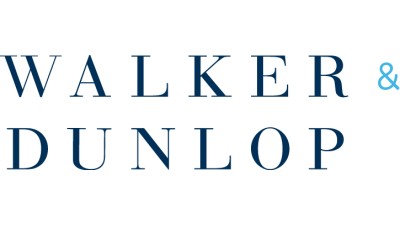Wall Street 'Trailblazer' Ivy Zelman On Housing And Why Immigrants May Be Key To Boosting The Market

It has been a wild time for the U.S. housing market. Home prices soared to record highs during the coronavirus pandemic, with the median price for an existing home hitting over $363K in June, which represents a 23.4% year-over-year increase. Along with that, while the multifamily market took a hit as a result of the pandemic, there has been a significant turnaround in the past few months, with demand steadily rising.
Will these high prices continue? Or is the housing market on the verge of a downturn? When real estate experts have questions about the housing market, one of the first people they turn to is Ivy Zelman, CEO of housing research firm Zelman & Associates. Zelman is a lauded Wall Street analyst who famously predicted the collapse of the housing bubble when few others were able to see where the tide was turning.
Zelman has a new memoir out titled Gimme Shelter: Hard Calls + Soft Skills From A Wall Street Trailblazer, in which she talks about her success in a male-driven industry and how other young professionals can follow her path to build their own companies.
Zelman was the guest on this week’s Walker Webcast, during which she and Dennis McGill, her partner at Zelman & Associates, spoke with Walker & Dunlop CEO Willy Walker about the state of the housing market and why they aren't as optimistic about the future of housing as the rest of the real estate world might be.

In 2005, Zelman and McGill published Investors Gone Wild, a report in which they said that housing in the U.S. was overbuilt and oversupplied, and the country was on the verge of a major problem. This shook the market to its core, and many real estate professionals loudly declared that they were wrong. But, of course, the collapse that happened in the next few years would prove them right.
Zelman said that despite the protests of other professionals, she knew what she was hearing from mortgage executives who were providing mortgages to people who didn’t even have jobs and were fresh out of college and builders who were buying land even though the deals didn’t pencil out, and she knew which way the market was headed.
“I was told by the head of product management that I was going to ruin my career, and I was labeled a permabear, and I better upgrade the stocks. And I said, ‘Dennis, let's downgrade these stocks,’ and we did,” Zelman said.
Walker brought up the company’s recent Cradle to Grave report, which presented, in his words, “a reasonably bearish outlook on the U.S. housing market, underpinned by the demographics of our country and the fact that birth rates have fallen dramatically and that we don't have the type of immigration that we used to.”
He cited, in particular, a line McGill wrote: “Housing is defenseless against slowing demographics.” McGill said that the 2020 decennial census showed that the pandemic has created all kinds of distortions around housing but that the market will be left with core underlying demographic demand when the dust settles, which is really about how much the economy and the population can grow.
“The reality of it is even before talking about the forecast, household formation has been falling for decades,” McGill said. “And we are not growing the way we've grown historically. And if you don't grow the population, you don't grow households, you don't need incremental housing demand and supply.”

He said that fertility rates have been falling steadily, and while the baby boomer population has been able to help stave off the population decline, the death rates are going to climb each year, and as a result, the organic population growth of the country will be negative for the first time ever by the end of the decade. This, of course, will severely impact the demand for housing.
One way to counteract population decline, Zelman said, is through immigration. The problem is that the number of documented immigrants who came into the country in 2020 was a fraction of what it was in years past, and so far, the numbers aren’t improving.
“If we can get both sides of the aisle to agree that immigrants are actually going to allow for us to have an economy that can thrive, then maybe we would have a more positive outlook,” she said.
McGill said that the pandemic bump in housing prices and demand is a very risky thing to extrapolate from. He said that based on current demographics, the country needs to build somewhere between 1.3 million and 1.4 million housing units, which is what the U.S. is currently doing. However, when you look at permits and starts, that pace is closer to 1.7 million. All of this could possibly lead to supply and demand issues.
“If you already have a pipeline and a backlog that's running above where you think mid-cycle should be and you think that that's only going to continue to increase over the next couple of years, then every step higher is a seed that you're planting of oversupply,” McGill said.
On Oct. 27, Walker will host John Rice, founder and CEO of Management Leadership for Tomorrow. Register here for the event.
This article was produced in collaboration between Walker & Dunlop and Studio B. Bisnow news staff was not involved in the production of this content.
Studio B is Bisnow’s in-house content and design studio. To learn more about how Studio B can help your team, reach out to studio@bisnow.com.

